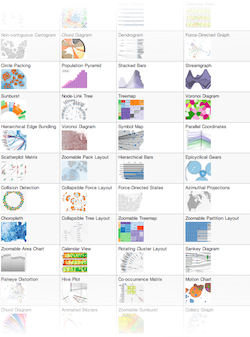Writing about D3.js
On Monday I signed a contract to write a book about D3.js for Manning Publications. If all goes according to schedule, it should be out early next year, with draft chapters available in electronic form for subscribers even sooner.
Wow! It's certainly exciting, though I'm still worried over how much work it will be. I do get paid a useful advance at two milestones within the process, but I'll likely need to raise my consulting rates to compensate for my overall lost time.
I didn't say "yes" lightly, but I couldn't really say "no" either.
Why D3? The simplest answer is "that's what Manning asked for". But the longer I sat on their recruitment email, the more I realized that D3 is one of the tools I love and choose and use and even analyze a little every day, but rarely talk about. I'm not a visual artist so my use, especially my charts and graphs and even maps, always seemed a bit too unglamorous for sharing. Meanwhile D3 itself has been steadily and deservedly growing in popularity, and I'd certainly enjoy helping more eye-savvy creators learn to wield its technical side better. So I'm looking forward to sharing more about the library. A lot more.

Why a traditional publisher? Well, I've always been interested in writing a book but not terribly excited about the additional work of paid distribution. Signing a contract with a publisher obligates me to ship (and on time), gives me access to a lot of editorial support and experience, and significantly increases my chances of getting at least some financial return. In one sense, Manning is just a very low-paying new client, but they did offer me a particularly interesting product to work on.
In another sense, though, this is also still an investment. It won't really be "my" product (at least not until its market value has faded), but I will get prominent enough credit — and eventually maybe even a share of their ongoing profit should my work serve them particularly well. Technologies come and go, but D3.js would be difficult to outdo; I could see it staying around for as long as HTML and JavaScript themselves remain popular. Seems like as good an opportunity as any, eh?
Anyway, the book is a mere Table of Contents at this point so I won't persist boring you with further naïveté. Make room on your nightstand. 2014 will be here before you know it.
